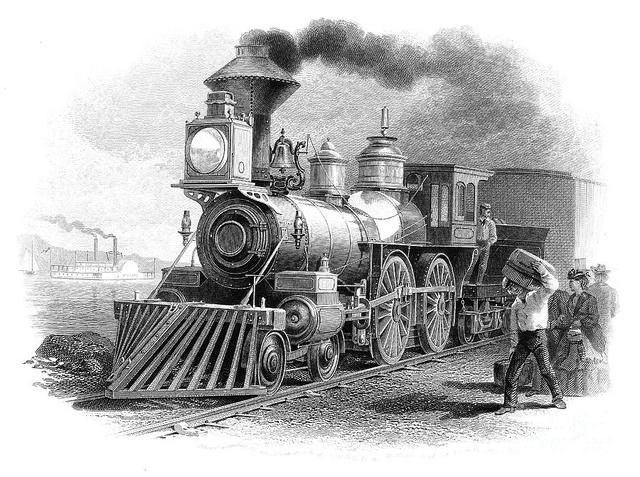Story of Government Regulation of Railroads
worked better than letting a few financiers rule the system for their own private benefit
Terminal Sickness
How a thirty-year-old policy of deregulation is slowly killing America’s airline system—and taking down Cincinnati, Memphis, and St. Louis with it.
Washington Monthly Magazine, by Phillip Longman and Lina Khan, March/April 2012
Magazine
Article focuses mostly on the airline industry…. this section discusses railroads:
Throughout most of the nineteenth century and much of the twentieth, generations of Americans similarly struggled with how to maintain an equitable and efficient railroad network, and for much the same reason. During various railroad bubbles, exuberant investors would build lines to the farthest corners of continent, much like start-up airlines in the 1980s. But over time, the high fixed cost of railroading and the basic economics of any networked industry left all but the core of the emerging system unprofitable before it received the benefits of government regulation. In the 1870s, railroads accounting for more than 30 percent of domestic mileage failed or fell into court-ordered receivership.
This was true even though most railroads maintained a near or total monopoly in most of the intermediate towns through which they ran. As Charles Francis Adams wrote in his 1878 book, Railroads: Their Origin and Problems:
“Every local settlement and every secluded farmer saw other settlements and other farmers more fortunately placed, whose consequent prosperity seemed to make their own ruin a question of time. Place to place, or man to man, they might compete; but where the weight of the railroad was flung into one scale, it was strange indeed if the other did not kick the beam.”
This was bad enough, but matters soon got worse. High fixed costs combined with ruinous competition in the early railroad industry created an overwhelming business incentive to consolidate and downsize, again much like what’s happening in the airline industry today. And consolidation in turn led to even more monopoly power—not just over small and midsize communities but over large cities as well. By the 1880s, the fortunes of such major cities as Philadelphia, Baltimore, St. Louis, and Cincinnati rose and fell according to how various railroad financiers or “robber barons” combined and conspired to fix rates. Just as Americans scream today about the high cost of flying to a city like Cincinnati, where service is dominated by a single carrier, Americans of yesteryear faced impossible price discrimination when traveling or shipping to places dominated by a single railroad “trust” or “pool.”
This, more than any other factor, is what led previous generations of Americans to let go of the idea that government should have no role in regulating railroads and other emerging networked industries that were essential to the working of the economy as whole. “While the result of other ordinary competition was to reduce and equalize prices,” Adams noted, “that of railroad competition was to produce local inequalities and to arbitrarily raise and depress prices. The teachings of political economy were at fault.”
And indeed they were. The response was the creation of the Interstate Commerce Commission in 1887—a move that most Americans viewed as essential to preserving free enterprise and their way of life. The ICC took on the task of moderating the price discrimination that railroads practiced, evening out the burden among different regions and classes of passengers and shippers in a way that allowed railroads to earn enough money to cover their fixed costs, improve their infrastructure, and give their investors a fair reward. In effect, the profits railroads earned on some highly trafficked long-haul routes came to be rechanneled by government policy to cover the cost of providing balanced and affordable service throughout the country. Railroads were regulated much as telephones and power companies came to be—as natural monopolies that would be allowed to remain in private hands and earn a profit, but not at the cost of skewing the overall efficiency, balance, and fairness of American economy.
The process was messy and far from flawless. Striking the right balance required that Americans hash out what would today be called an “industrial policy,” and to do so in sometimes minute detail, such as setting the relative prices of shipping hogs verses hams from Dubuque to Chicago. But overall, government regulation of railroad pricing and routes worked better than letting a few financiers rule the system for their own private benefit. The country, after all, emerged as an industrial powerhouse during this period. Managing the structure and pricing of railroads was particularly essential to maintaining the competitiveness of small-scale entrepreneurs and of midsize manufacturing cities like Cincinnati or St. Louis. It wasn’t that the government picked winners or losers; rather, it prevented the machinations of railroad financiers from doing so.

